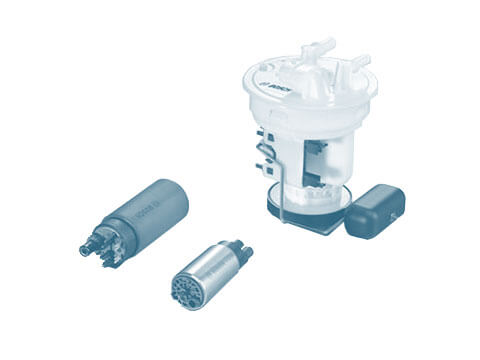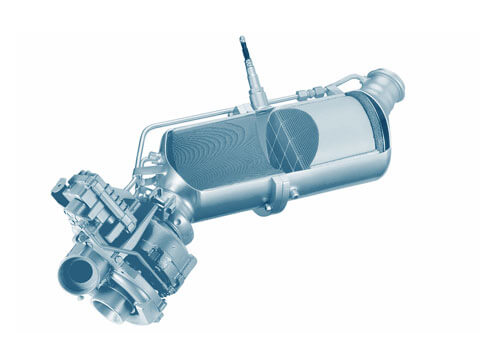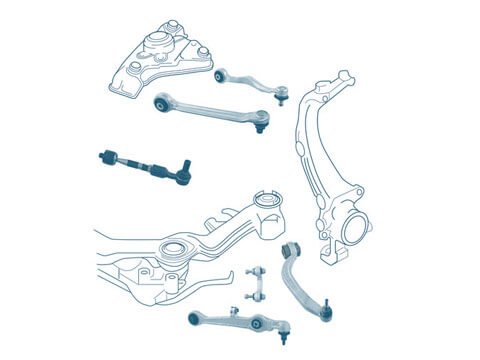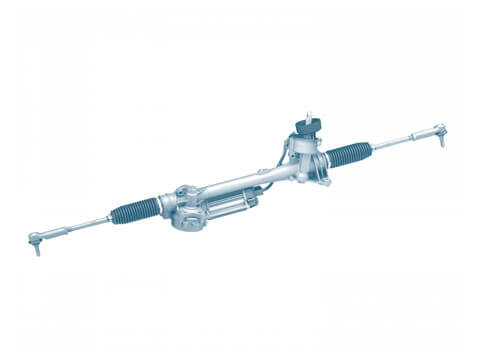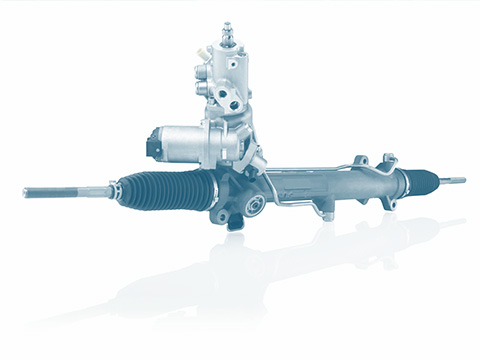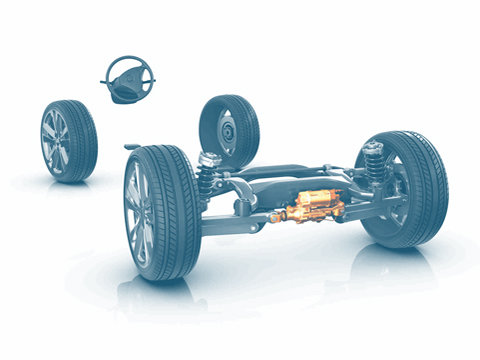All-wheel drive
With an all-wheel drive, the drive power of a vehicle is transferred to the road by being distributed across all of the wheels.
Function
Unlike with a front-wheel drive or rear-wheel drive, the all-wheel drive type channels the driving force across all of the wheels. With an all-wheel drive, the drive power supplied by the motor is transferred to the axle drive of the front axle and rear axle by means of a transfer case. A distinction is made between a permanent all-wheel drive and an on-demand all-wheel drive.
Permanent all-wheel drive:
With a permanent all-wheel drive, all of the wheels are powered at all times. The permanent all-wheel drive requires a centre differential between the front and rear axles to balance out different speeds of the wheels on the driving axles.
On-demand all-wheel drive:
With an on-demand all-wheel drive, the wheels on the non-driving axle are only engaged if required – for driving on icy roads or loose terrain, for example. The on-demand all-wheel drive works either with a rigid coupling between the front and rear axles or with a centre differential. The transfer case and axle drive can also have a lock that can be engaged on demand.
Different systems are used for the torque distribution. For example, a transfer case with:
- Bevel gear differential
- Planetary gear
- Multiple-disc clutch
- Viscous coupling
- Torsen differential
- Haldex coupling
- Crown gear differential
All-wheel drives in off-road vehicles often have an additional transmission for low speeds and steep inclines.
Vehicles with a hybrid drive are also often equipped with all-wheel drives, whereby the front axle is powered by a conventional internal combustion engine and the rear axle is powered by an electric motor.
There are various terms and abbreviations to describe all-wheel drives, including the following:
- AWD: all-wheel drive
- 4WD: four-wheel drive
- 4x4: four-by-four
Vehicle manufacturers also use other terms: Audi, for example, calls its all-wheel drive systems “quattro”, whereas BMW uses the term “xDrive”, Mercedes-Benz “4Matic”, and VW “4Motion”.
Safety
The main advantage of an all-wheel drive is that it has a higher traction compared with a front-wheel or rear-wheel drive, especially on wet or icy roads: the wheels can build up higher overall cornering force, because the driving forces transferred to each wheel don’t need to be as high. This results in higher driving stability, especially in corners.
Protection of the environment
Vehicles with all-wheel drives have a higher fuel consumption, as all-wheel drives are heavier. In addition, the in-built components cause greater loss of friction and power.




